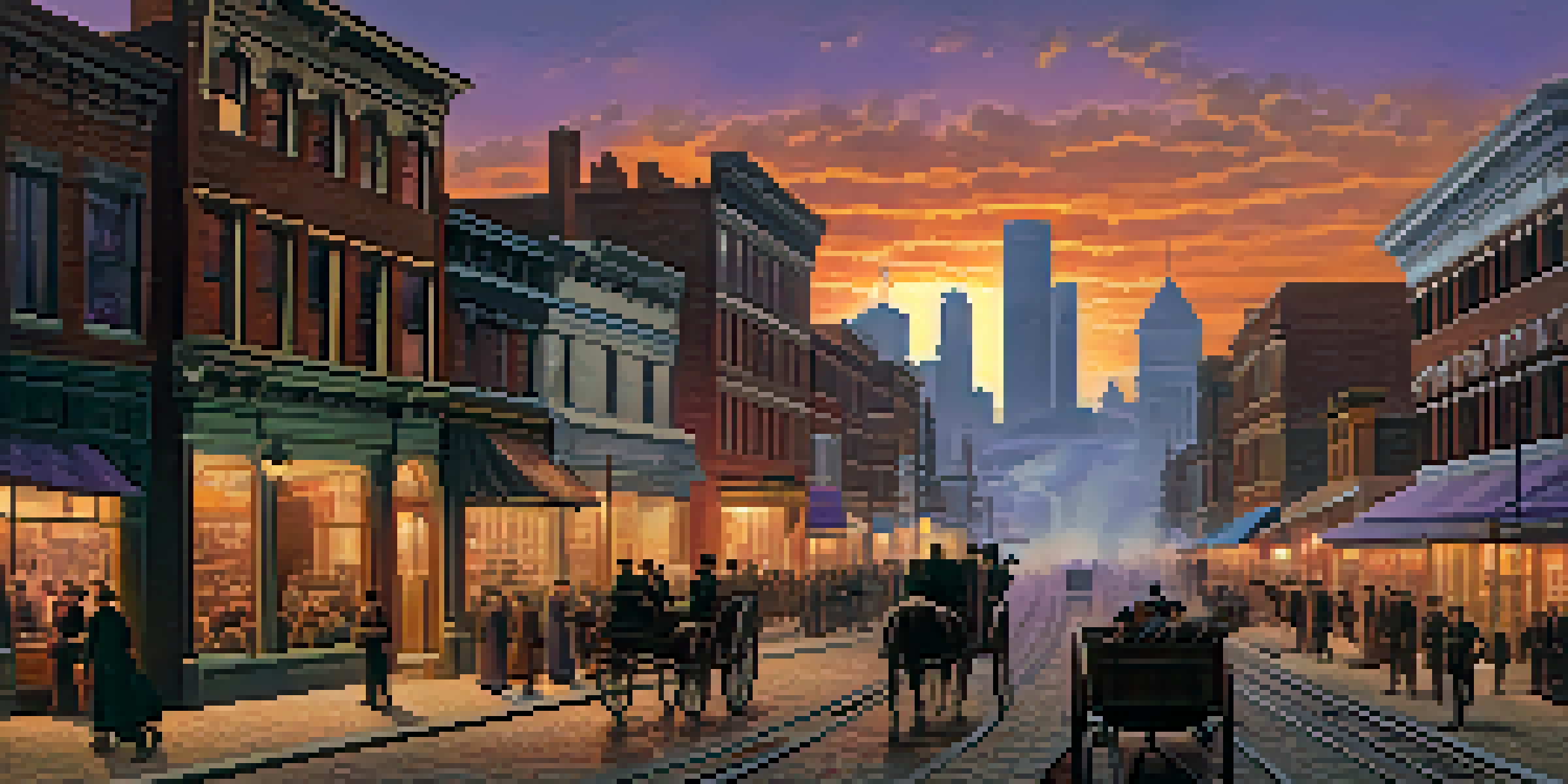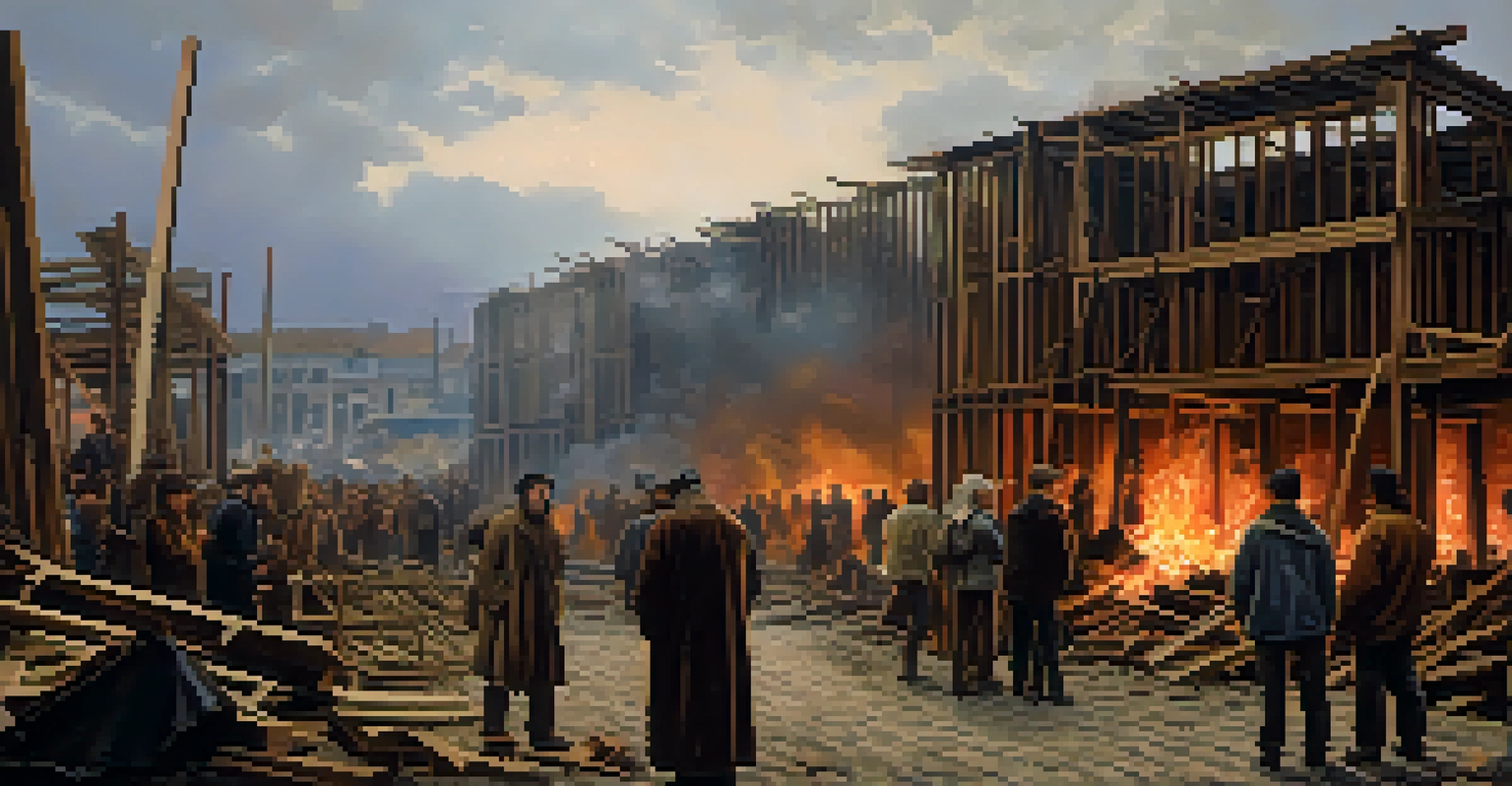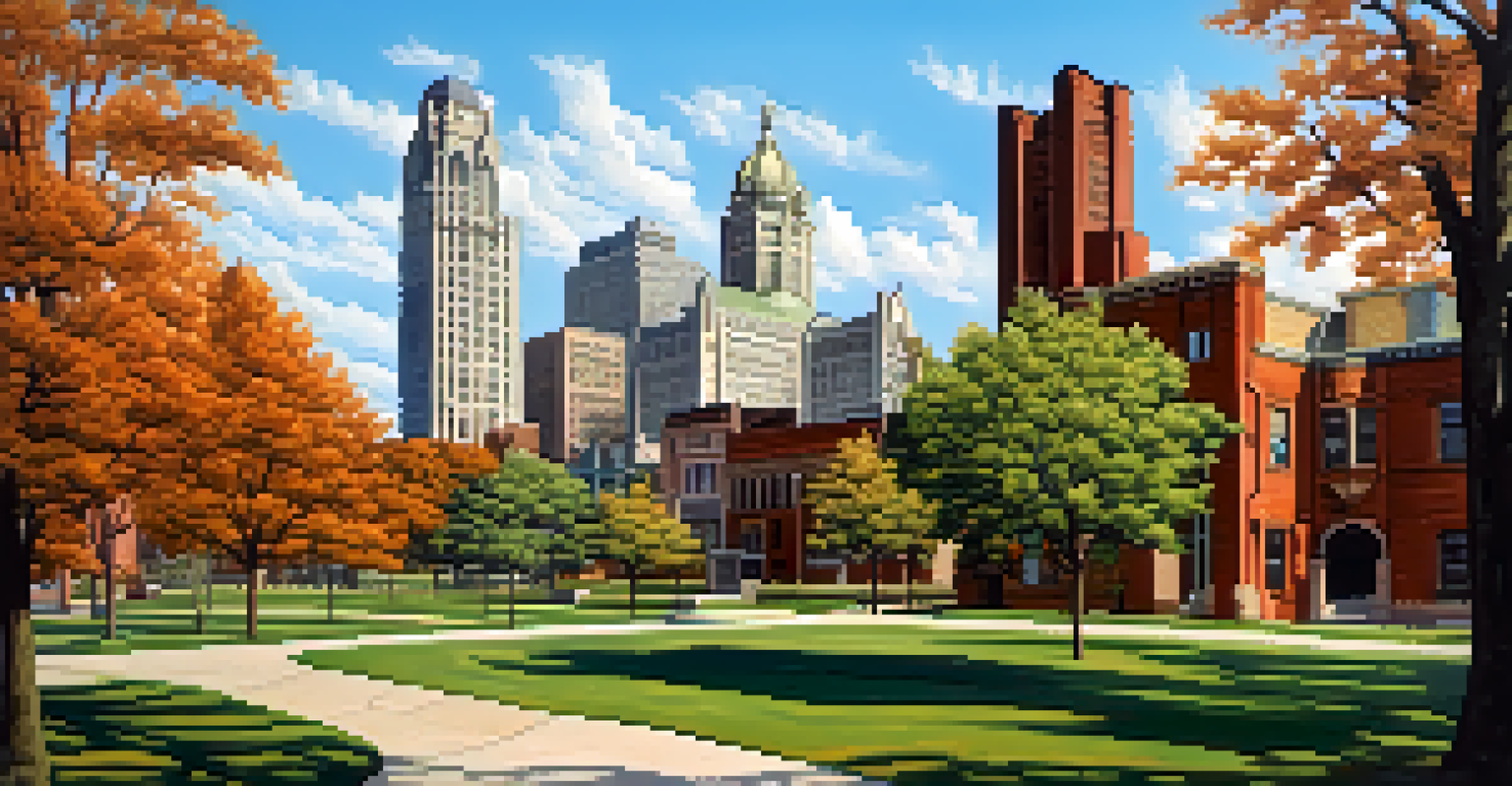The Great Detroit Fire of 1805: A City Rebuilt

The Spark That Ignited a City: Understanding the Fire
On June 11, 1805, a devastating fire swept through Detroit, leaving destruction in its wake. The flames erupted in the early hours and quickly spread, fueled by the wooden structures that dominated the cityscape at the time. As the fire raged, many residents were caught off guard, leading to chaos and frantic attempts to save their homes and belongings.
Out of the ashes of tragedy, a community can rise, stronger and more united than before.
The fire's origins remain somewhat unclear, but it's widely believed to have started in a small building near the riverfront. With winds whipping through the area, the blaze rapidly engulfed much of the downtown district. It was a perfect storm of circumstances that transformed an ordinary day into one of the most tragic events in the city's history.
In just a few hours, the fire had destroyed nearly all of Detroit's buildings, leaving only a handful standing. The aftermath was heartbreaking—residents were left homeless and the city was in ruins. However, this calamity would serve as a catalyst for significant change in the years to come.
The Immediate Aftermath: A City in Ruins
In the wake of the fire, the initial response was one of shock and despair. Many residents gathered in makeshift shelters, unsure of what to do next. The loss was not just physical; it deeply affected the community's spirit as families mourned their homes and livelihoods.

Local leaders quickly sprang into action, organizing relief efforts to help those displaced by the fire. Donations poured in from neighboring communities, showcasing the resilience of human kindness in the face of tragedy. However, the road to recovery would be long and fraught with challenges.
The Great Fire Reshaped Detroit
The 1805 fire devastated the city but prompted significant changes in urban planning and building codes.
Despite the overwhelming devastation, the fire also sparked a sense of unity among the residents. They realized that rebuilding the city was not just about restoring their homes, but also about coming together as a community. This realization set the stage for the city's remarkable transformation in the years that followed.
Lessons Learned: Fire Safety and Urban Planning
The Great Detroit Fire served as a wake-up call for city planners and builders alike. In the aftermath, there was a renewed focus on fire safety and the materials being used in construction. The fire highlighted the dangers of wooden buildings and ultimately led to the implementation of stricter building codes.
It is not the strongest of the species that survive, nor the most intelligent, but the one most responsive to change.
One of the key lessons from the tragedy was the importance of urban planning. City leaders recognized that a well-designed infrastructure could help prevent such disasters in the future. This perspective laid the groundwork for a more resilient Detroit, better equipped to handle emergencies.
As the city began to rebuild, architects and planners prioritized fire-resistant materials and innovative designs. The new buildings reflected a commitment to safety without sacrificing the character of the city, showcasing a blend of form and function that would define Detroit for years to come.
Rebuilding Begins: A Community Comes Together
As the smoke cleared, the people of Detroit began the arduous task of rebuilding their city. This effort was not just about constructing new buildings; it was about restoring hope and community. Neighbors banded together, sharing resources and labor to help one another rise from the ashes.
Local businesses played a crucial role in the recovery process. Entrepreneurs saw an opportunity to rebuild and expand, and many opened their doors again—often in temporary locations. This entrepreneurial spirit not only provided jobs but also revitalized the local economy, breathing new life into the community.
Community Unity in Recovery
In the aftermath, Detroit residents came together to rebuild their city, fostering a strong sense of community.
The spirit of collaboration and resilience became the bedrock of Detroit's rebirth. Events were organized to celebrate the progress made, fostering a sense of pride among residents. The fire, once seen as a catastrophe, became a turning point that united the city and set it on a path toward prosperity.
A New Vision: Detroit’s Architectural Evolution
With the city in ruins, architects and planners had a unique opportunity to reshape Detroit's skyline. The rebuilding phase saw the rise of brick and stone structures that not only offered more durability but also showcased innovative architectural styles. This evolution in design marked a significant shift from the wooden buildings that had previously characterized the city.
Key landmarks emerged during this period, including public buildings and commercial spaces that reflected the aspirations of a growing metropolis. The use of fire-resistant materials became a standard practice, ensuring that the city would be better protected from future disasters. These architectural advancements were pivotal in redefining Detroit's identity.
The vision for a modern Detroit was born from the ashes of tragedy. As the city rebuilt, it embraced a commitment to progress and resilience, laying the foundation for future growth. This era of architectural innovation would leave a lasting legacy that continues to influence the city's landscape today.
Cultural Resurgence: The Spirit of Detroit
The aftermath of the Great Fire also ignited a cultural renaissance in Detroit. As the city rebuilt, artists, musicians, and writers found inspiration in the resilience of their community. This outpouring of creativity played a significant role in shaping the cultural fabric of the city, fostering a sense of pride and identity among its residents.
Cultural events began to flourish, celebrating the spirit of the community and the rich history of Detroit. From festivals to art shows, these gatherings provided a platform for local talent and brought people together in a shared celebration of their city. This cultural resurgence helped to heal the wounds left by the fire, creating a newfound sense of belonging.
Cultural Renaissance Post-Fire
The fire sparked a cultural revival, inspiring artists and musicians and reshaping Detroit's identity.
As the city evolved, so did its cultural offerings. Detroit became known not just for its industry, but also as a hub of art and music. The legacy of the Great Fire had transformed the city into a vibrant, dynamic place where creativity thrived and the community felt empowered.
Legacy of Resilience: Detroit’s Journey Forward
The Great Detroit Fire of 1805 left an indelible mark on the city's history, but it also highlighted the resilience of its people. The challenges faced during the rebuilding process forged a strong community spirit that would endure for generations. This legacy of resilience became a cornerstone of Detroit’s identity, influencing how residents approached adversity in the years to come.
As Detroit continued to grow and evolve, the lessons learned from the fire informed its development. The city embraced new technologies and industries, becoming a leader in manufacturing and innovation. However, the memory of the fire served as a reminder of the importance of community and collaboration in the face of challenges.

Today, Detroit stands as a testament to the strength and determination of its residents. The story of the Great Fire and its aftermath is a powerful reminder that even in the darkest times, hope and unity can pave the way for a brighter future. This legacy continues to inspire new generations as they work to build an even better Detroit.